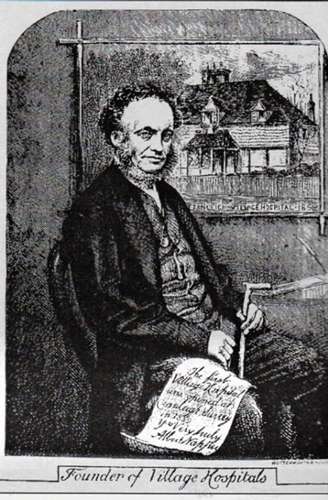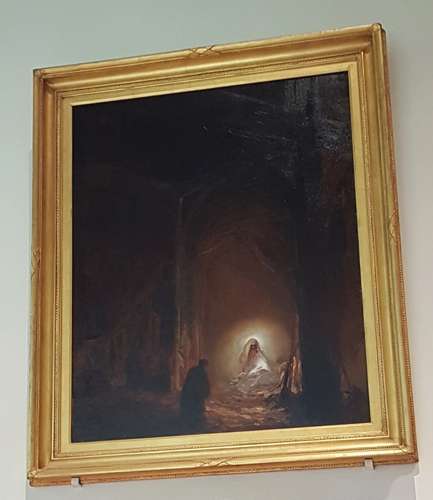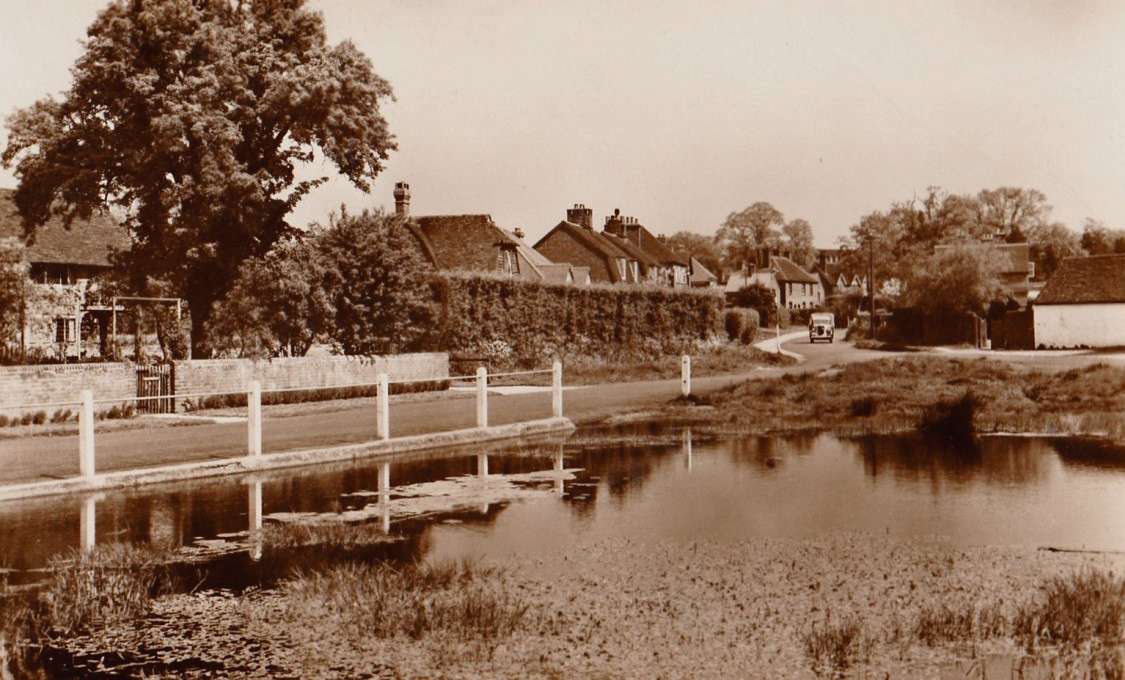
A Valentine’s postcard of the 1920s, with Pond Cottage on the extreme left
A few incidents may give a flavour of life here 100 years ago.
The Cranleigh Women’s Institute was founded in 1921 under the direction of Mrs Eric Bonham of Knowle ‘for the Beneficial and Instructional advantage of the Women of the Parish’. Its first meeting was held in St Andrew’s Room, at the church that was then on the Common. The initial membership was about 20.
The Women’s Institute movement began in Canada; the first British branch was started in Anglesey in 1915. Its aim was to encourage rural women to help the war effort, especially by producing and preserving home-grown fruit and vegetables. Since then, its aims have broadened out.
Dr Napper with a picture of the first ‘village hospital’ in the country
In Cranleigh, members soon showed their public spirit. They contributed ‘a substantial sum’ to the building of the Memorial Village Hall in the centre of the Village, opened in 1933. During WW2, Women’s Institute members organised and managed a canteen for Armed Services stationed in Cranleigh. It was called ‘The Troop Inn’.
Mrs Heath Robinson served for a time as Secretary of the WI, and enlisted her husband, the artist and cartoonist William Heath Robinson, to design a banner for it, which now hangs in the Village Hall.
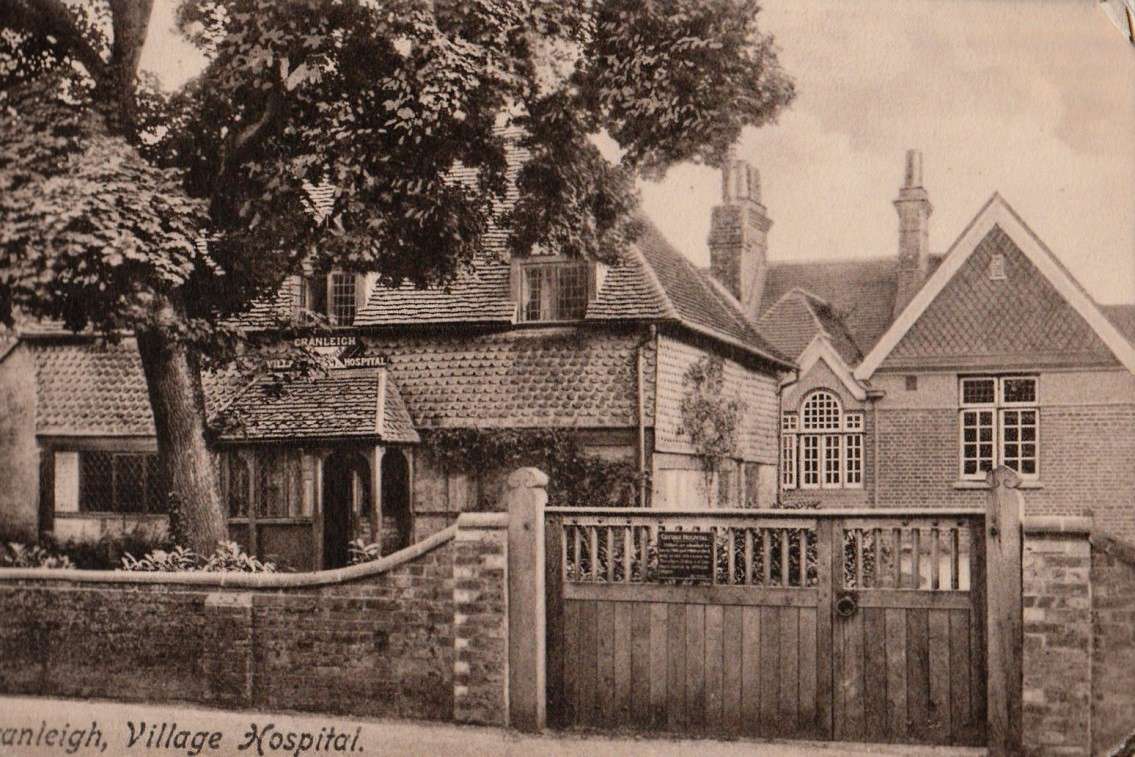
The Village Hospital on a postcard post-marked 1913, with the 1901 extension on the right (Frith photo, courtesy of Vera Wilkinson)
In June, a big fête was held in the grounds of Knowle, by permission of Sir George and Lady Bonham, to raise money for an extension to the Village Hospital. The aim was to improve its facilities and to increase the number of patients it could accommodate. The hospital was founded in 1859, in one of Cranleigh’s oldest buildings, dating from the 15th century, which was donated by the rector, the Rev. John Sapte. The hospital was the brainchild of Dr Albert Napper, the village doctor, who became its medical director. It was supported by subscriptions of local people; patients paid what they could. This pattern of medical provision was copied in many villages throughout the country.
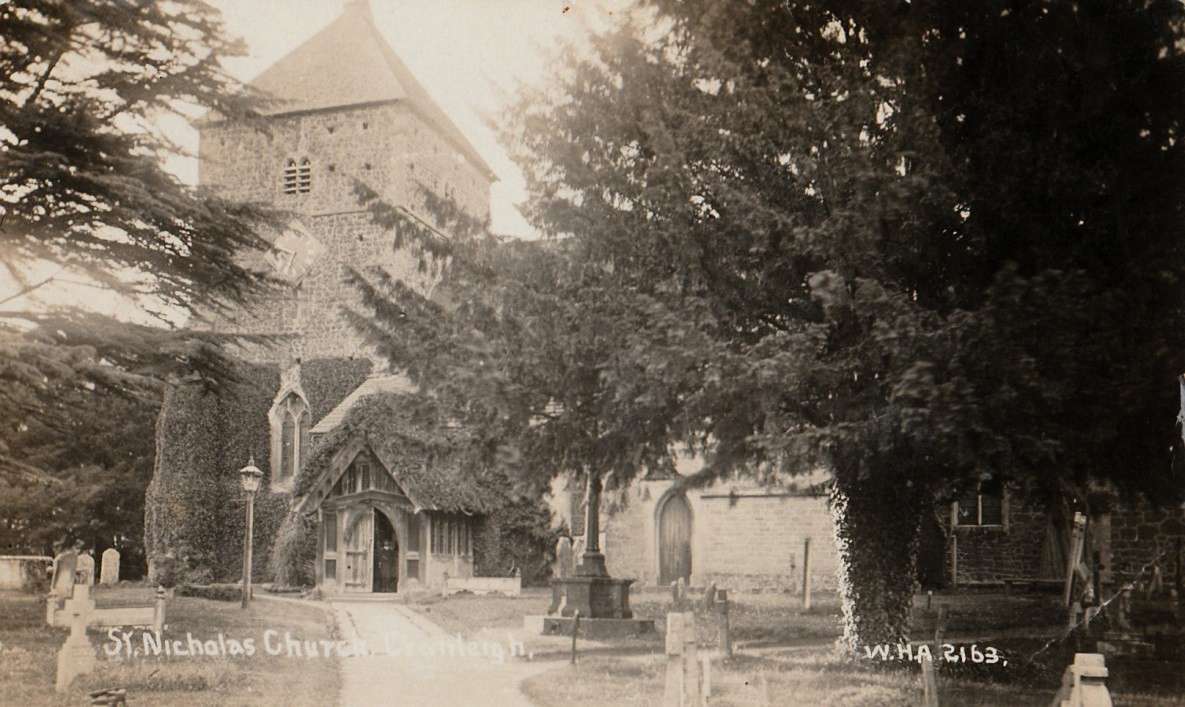
The parish church on a card post-marked 1919 (courtesy of Vera Wilkinson)
In 1920, a gift by the Cobham Brewery of a small strip of land from the garden of the ‘Three Horseshoes’ opened the possibility of extending the hospital. In 1921, a member of the hospital committee, Mrs Naumann (whose husband had drowned in the Lusitania), died leaving a legacy to the village hospital, as did Miss Alice Sapte, daughter of the former rector. The extension would cost about £3,000, and the fête aimed to make up this amount. It ‘drew thousands from the whole countryside’ and raised £860. The hospital was closed from October 1921 so that the building firm of Warren’s could work on the extension.
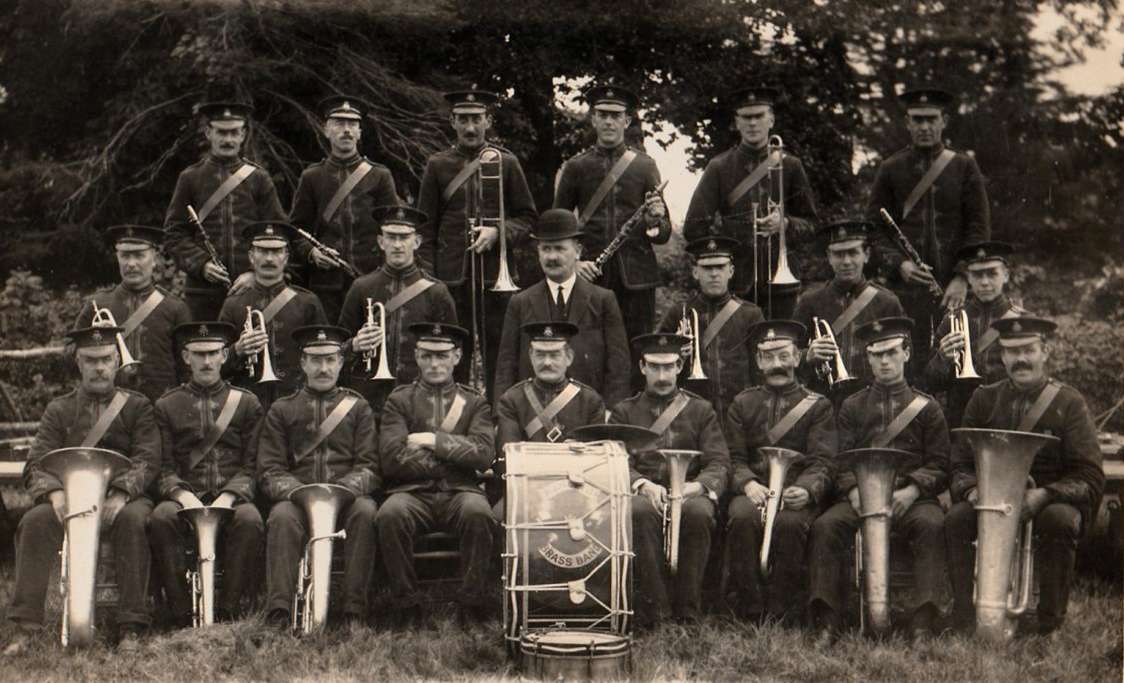
The Cranleigh Brass Band in 1921 or 1922. William Eede, the chief bugler, is 3rd from the left in the middle row
At the parish church, ‘The PCC’ made its appearance. In each parish, the vestry committee used to manage both secular and religious business. In 1894, however, the Local Government Act took away the vestry committee’s secular duties and gave them to newly-created parish councils. Church business continued to be managed by the vestry committee until in 1921 the Parochial Church Councils (Powers) Bill was passed by the National Assembly of the Church of England, creating a ‘PCC’ in every parish. St Nicolas church was ready, having elected a PCC in June 1920, and it now began to function. The first PCC here had eighteen members, including eight women. It was a landmark in the participation of ordinary parishioners in running the local church.
On Armistice Day (November 11th), the parish church’s tenor bell tolled the number of the war dead. On the following Sunday a big service was organised by the ex-servicemen’s organization known as the Pals’ Club. The service was followed by a procession to the War Memorial, in which the Officer Training Corps of Cranleigh School and the Cranleigh Brass and Reed Band joined. The ‘Last Post’ and ‘Reveille’ were sounded by the bugler, William Eede.
‘The Nativity’ by Joseph Longhurst, 1921
Finally, a Nativity picture was specially painted by local artist Joseph Longhurst, who lived on the Common, in what is now called Pear Tree Cottage (then Pond Cottage). He was an accomplished artist who had 20 paintings exhibited at the Royal Academy. This painting was for a children’s Christmas service in the parish church. A report in the Parish Magazine said that it ‘was placed near the lectern and lit by hidden lights. Flanked by little firs and with a floor of straw in front of it … it was an inspiration’. Said to have been based on the barn at Baynards, it now hangs in the north transept.
The Cranleigh History Society meets on the second Thursday of each month at 8.00pm in the Band Room. The next meeting will be on Thursday December 9th, when Gary Miles will speak on ‘A history of Punch and Judy’.

